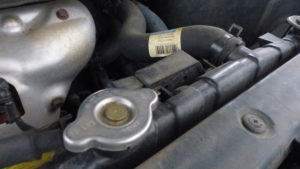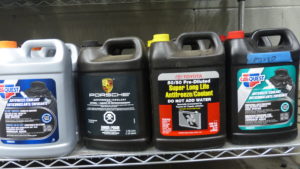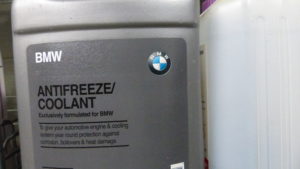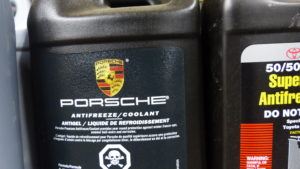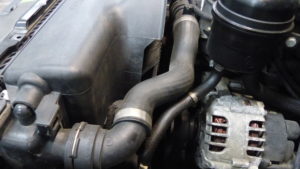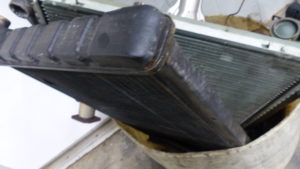Actually its always that time of year when you should have a health check-up done on your cooling system.
Many of us who live in the southern climes tend to think about our cooling systems when the hot months occur. But we need to keep in mind that this important system operates all year ’round and is vital to our motor’s operation as well as our seasonal comfort.
This system performs many different functions including keeping our engine at the ideal operating temperature. How does it do this? Well, it not just water flowing through the radiator.
Antifreeze is part of the system that actually raises the boiling temperature of the water content that, when mixed together, becomes the coolant that is pumped around the engine, radiator, and heater core.
This magical elixir not only raises the boiling point of the coolant mixture, it provide lubrication to the water pump, an integral component of the cooling system.
Many car companies have their own specific formulations of antifreeze and some are supposed to last for 100,000 miles.
Another important feature of the cooling system is that it is pressurized. By keeping the closed system under pressure the boiling point is further raised. You see, car company engineers have determined that to get the best fuel efficiency out of a modern motor the engine temperatures should not be too cool. Keeping the coolant pressurized allows the temperature of the block to stay in an efficiency zone that is higher than the normal boiling point of water.
There are at least two radiators in your car that carry the coolant. One is the familiar large rectangle behind the grill.
The other is on the other side of the firewall, usually somewhere behind the glove compartment. That second one is the heater core. It is a small radiator that allows you to keep the interior warm in the winter and the windshield clear of frost and condensation.
So you have very hot fluid coursing about the engine, interior and just behind the grill under pressure and performing many functions from cooling, to heating, to defrosting, to lubricating, and we conveniently take it for granted – until it has a failure.
But it doesn’t have to be that way. Many problems can be spotted before they terminate your commute. All those hoses can be checked for signs of deterioration, the radiator can be pressure tested, and the coolant can be tested for its ability to act as an anti-freeze.
If your car uses a cogged timing belt and its time to have it changed out, you will probably hear us recommend that you change out the water pump as well. While it may sound like we are pumping up your bill, we are actually trying to save you some money as the labor to replace the water pump separately is often just the same as doing the timing belt replacement.
Feel free to wait until the hotter months or come in before winter to have your cooling system checked along with its components. It can buy you some peace of mind when you take that long holiday road trip.

